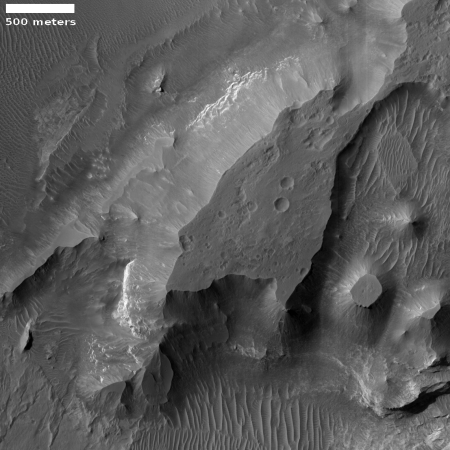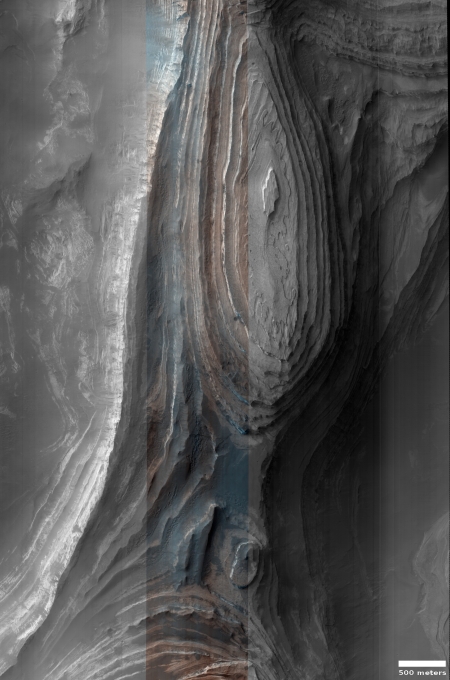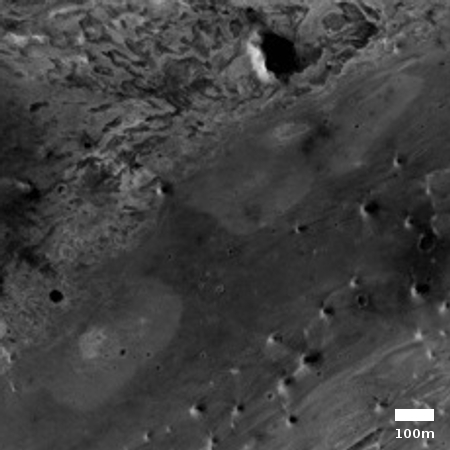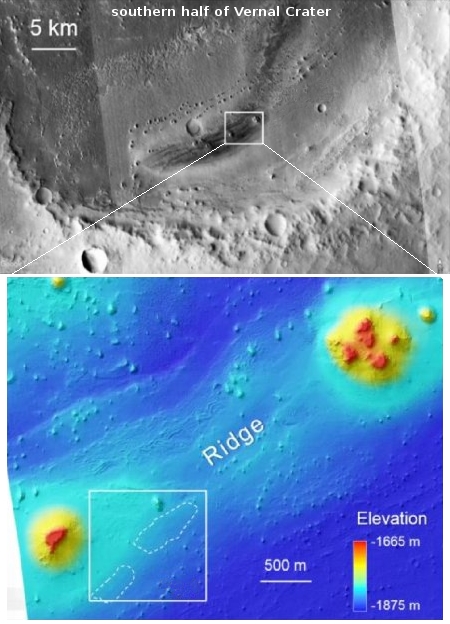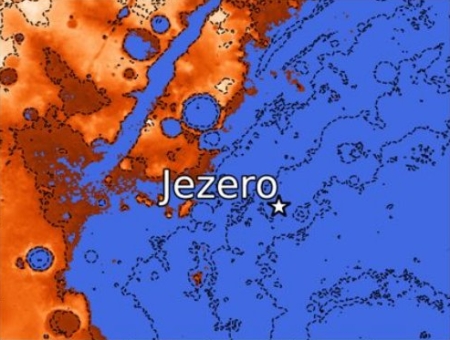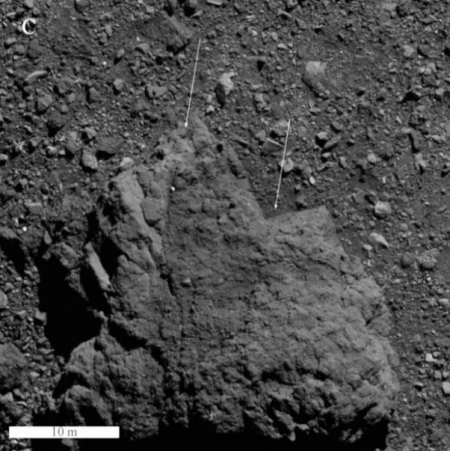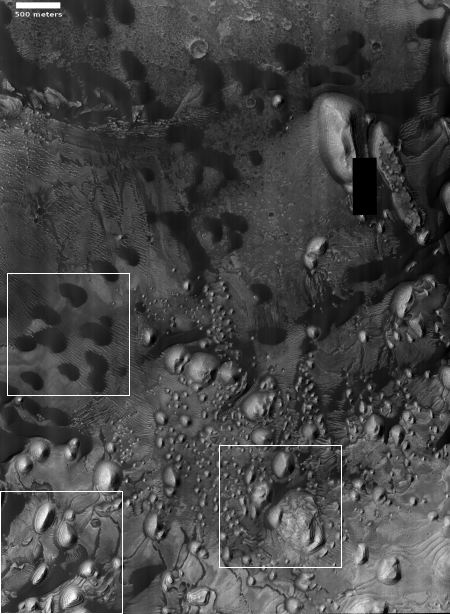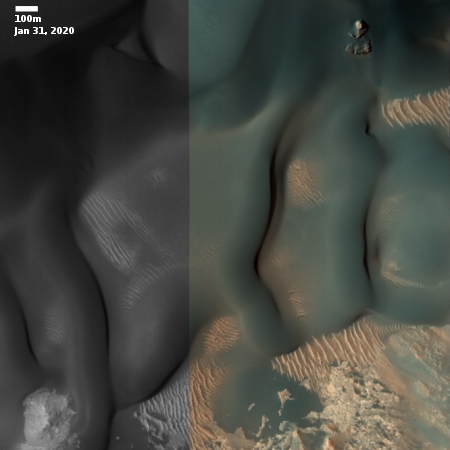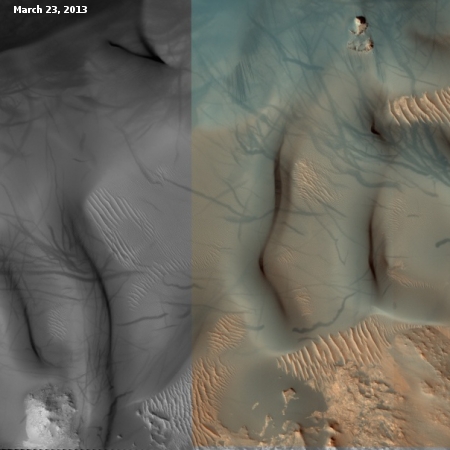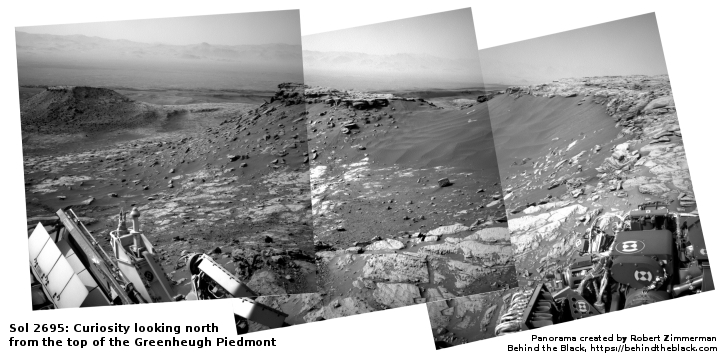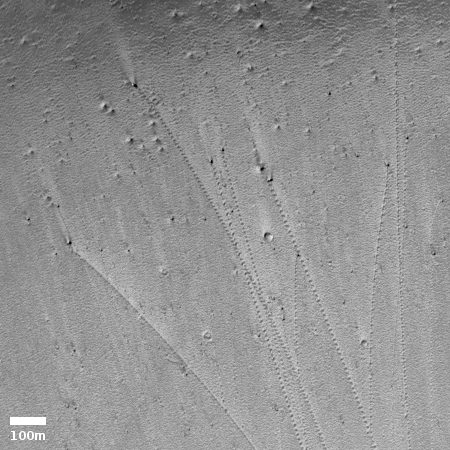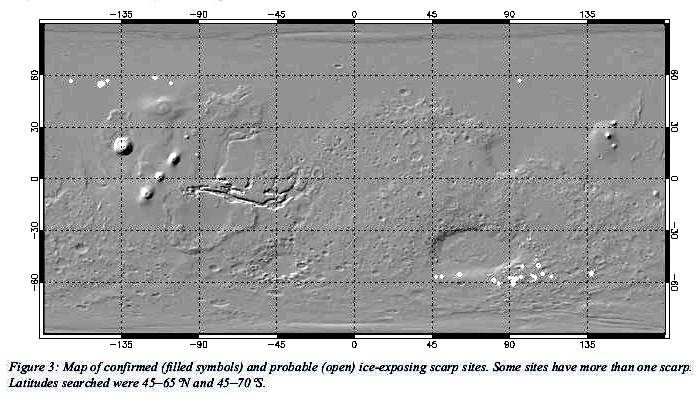
Today was supposed to have been the last day at the cancelled 51st annual Lunar & Planetary Science conference. As such, only a half day of presentations had been scheduled in order to give participants the option of returning home sooner.
While many of the abstracts of the planned-but-now-cancelled presentations were on subjects important to the scientists but not so interesting to the general public, two sessions, one on Martian buried glaciers/ice and a second focused on Mercury, would have made the day very worthwhile to this science journalist, had I been there.
The map above, from the first abstract [pdf] of the Mars session, might possibly epitomize our present knowledge of ice/glaciers on Mars. It provides an update of the continuing survey of ice scarps in the high mid-latitudes of Mars (see the most recent post on Behind the Black from February 12, 2020). Clearly, the more they look, the more they find of these ice scarps, cliff faces with visible exposed pure ice layers that will be relatively easy to access.
But then, finding evidence of some form of buried ice on Mars is becoming almost routine. Of the thirteen abstracts in this Mars session, ten described some sort of evidence of buried ice or glaciers on Mars, in all sorts of places, with the remaining three abstracts studying similar Earth features for comparison. The scientists found evidence of water ice on the top of one of Mars’ largest volcanoes (abstract #2299 [pdf]), in faults and fissures near the equator (#1997 [pdf]), in the eastern margin of one of Mars’ largest deep basins (#3070 [pdf]), in Gale Crater (#2609 [pdf]), in the transition zone between the northern lowlands and southern highlands (#1074 [pdf]), and of course in the northern mid-latitude lowland plains (#2648 [pdf] and #2872 [pdf]).
The results tell us not that there is water ice on Mars, but that it is very plentiful, and that its presence and behavior (as glaciers, as snowfall, and as an underground aquifer) make it a major factor in explaining the geology we see on Mars. I’ve even begun to get a sense that among the planetary scientists researching Mars there is an increasing consideration that maybe ice formed many of the river-like features we see on the surface, not flowing water as has been assumed for decades. This theory has not yet become dominate or even popular, but I have been seeing mention of it increasingly in papers, in one form or another.
If this possibility becomes accepted, it would help solve many Martian geological mysteries, primary of which is the fact that scientists cannot yet explain how water flowed as liquid on the surface some time ago in Mars’ long geological history, given its theorized atmosphere and climate. If ice did the shaping, then liquid water (in large amounts) would not be required.
Now, on to the Mercury session.
» Read more

